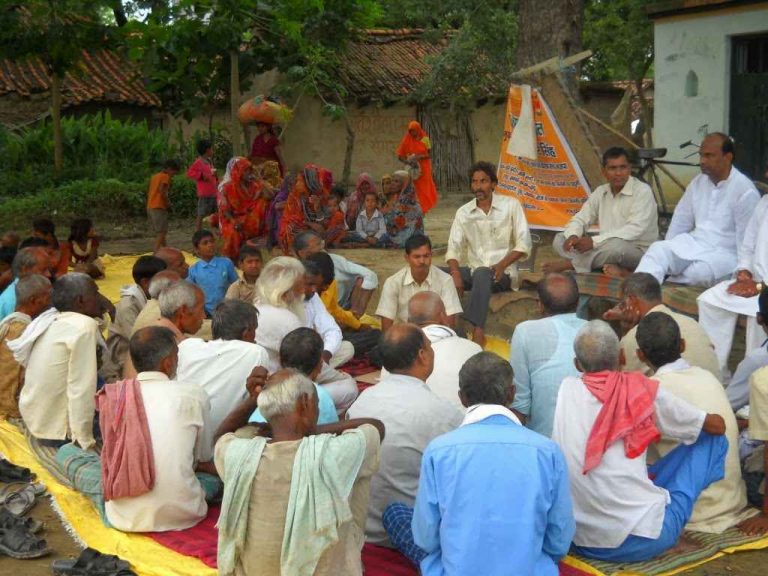
Above: The Orissa Gram Panchayats Act restricts the number of children an elected member of the body can have to two/Photo: publishyourarticles.net
In a stern warning to elected representatives, the apex court upheld an Orissa High Court judgment which disqualified a sarpanch for having a third child even though the first one was given for adoption
By Naved Ahmed
The Supreme Court, while promoting population control, upheld the disqualification of a sarpanch in Odisha on the grounds of having more than two children, even though one of them was given up for adoption.
The disqualification has its basis in the Orissa Gram Panchayats Act, 1965. This Act lays down a provision under Section 25(1)(v) and Section 25 (2): “A person shall be disqualified for being elected or nominated as, a Sarpanch or any other member of the Grama Panchayat constituted under this Act, if he, … has more than two children.”
The disqualification was challenged by the sarpanch who had been elected, but after election, he had had a third child. This prevented him from being a sarpanch. The Orissa High Court upheld the rule of disqualification and he approached the apex court.
Minasingh Majhi, the appellant in this case, approached the Supreme Court after he was aggrieved by the Orissa High Court’s decision. The Supreme Court noted that the sarpanch “had two children born to him on September 6, 1995, and October 12, 1998, respectively. He had filed his nomination and was elected in February 2002. A third child was born to the appellant on August 3, 2002. The first child was given in adoption way back on September 10, 1999.” The third child was born after he became a sarpanch.
His main contention before the bench of Chief Justice Ranjan Gogoi, and Justices Sanjay Kishan Kaul and KM Joseph was that as the first child was given up for adoption, he ceased to be a member of the sarpanch’s family and had become a member of the family of the adoptive parents. The sarpanch relied on Section 12 of the Hindu Adoptions and Maintenance Act, 1956, and submitted that even though he was the biological father of the three children; in reality, he was the father of only two of them and hence, the bar on three children would not apply to him. His contention that the Orissa Gram Panchayats Act wouldn’t apply to him was rejected by the apex court which said that the purpose of the said legislation was undoubtedly to put a restriction on the number of children elected members could have. The bench said: “The legislative emphasis is on the number of children that a prospective elected member has given birth to and not whether under provisions of different statutes in force, including the Hindu Adoptions and Maintenance Act, 1956, children born to such a person can be excluded from the family of the prospective elected member.”
The Supreme Court further clarified that emphasis should be placed on the number of children a prospective elected member had given birth to and not whether the children could be excluded from the family by way of different statutes. The Court further said that Section 2(2) of the Hindu Adoptions and Maintenance Act would not apply to the appellant as he belonged to a Scheduled Tribe.
The bench said: “There has been no challenge to the provisions of Section 2(2) of the 1956 Act before the High Court or even before this Court. We will, therefore, proceed on the basis that the provisions of the 1956 Act do not apply to the case of the appellant in which event the contention advanced that the adopted child, under the Act, had ceased to be a member of the appellant’s family, having become a member of the family of the adoptive parents, will have no legs to stand.” The Court dismissed the appeal, reiterating the High Court’s order of disqualification.
The apex court has, thus, set an example of putting checks on population control by letting people know the implications of having more children. India, being the second most populated country and having about 17 percent of the total world population, needs to take serious measures in this regard. Putting these restrictions on elected leaders is the right place to start. If they want to lead, they better lead by example. The purpose of the law so enacted was to produce a “role-model effect” among the locals. This “two-child policy” had initially been adopted by 11 states, but now remains effective in only seven states.
Disqualification in fighting elections is not the only measure taken by governments for population control. There are many disincentives for those having more than two children. These include refusal of government rights for the third child, denying healthcare for the mother and children and not providing supplements necessary for children.
However, while India cannot adopt strong-arm measures like China to curb its population, some of its approaches need to be critically analysed. Massive public campaigns can help create awareness about smaller, happier families instead of resorting to such bars as the sarpanch faced. While elected leaders may try to manipulate the laws, the judiciary is there to enforce these rights.

